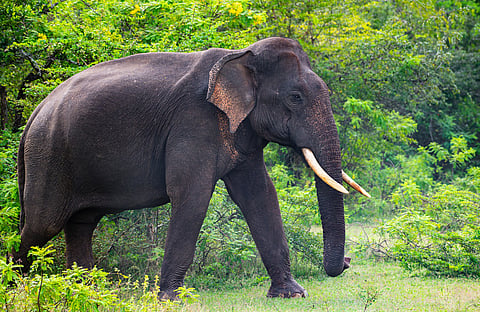

Asian elephant range is shifting from South Asia (India and Sri Lanka) to Southeast Asia. However, since elephants in these two locations cannot follow, there will be an escalation in human-pachyderm conflict, a new report by the United Nations has warned.
The assessment was released by the Convention on the Conservation of Migratory Species of Wild Animals (CMS) on October 2, 2025. It encapsulated the findings of a major workshop, which detail how climate change disruption is affecting migratory species across the board.
“Held 11-13 February 2025 in Edinburgh, United Kingdom, the Migratory Species & Climate Change Expert Workshop gathered 73 leading international experts, including scientists, wildlife managers, representatives of intergovernmental agencies, and NGOs from around the world,” a statement by CMS noted.
Shermin de Silva from the University of California San Diego gave a presentation titled Asian Elephant Range Shifts and Connectivity Under Climate Change at the workshop.
“Asian elephants are likely to alter their movements in response to anthropogenic land-use and climate change. Such movements can potentially be disruptive and expose human populations to risks of conflict with the species. Moreover, suitable habitats may shift over the long term to areas that are unaccustomed to the presence of elephants,” the Report of the Migratory Species and Climate Change Expert Workshop noted.
De Silva and her colleagues used ecological niche modelling to identify areas of suitable habitat for elephants in the past and under future scenarios, as well as predicted connectivity in the future.
They then compared these predictions to projections of human population density to identify areas of concern.
“While today the bulk of the Asian elephant population resides in South Asia (primarily India and Sri Lanka, accounting for >73% of the global population), suitable habitat in South Asia is likely to decrease across multiple scenarios. There is predicted to be more available habitat in Southeast Asia, where elephant populations currently are small and in decline. Contrary to general expectations, this indicates an easterly shift rather than a northward shift,” the analysis pointed out.
The scientists added that while habitat connectivity overall is declining, the best remaining connectivity is also in Southeast Asia. “This raises several biological and sociological issues – elephants that are unable to move will be at risk themselves as well as put human lives and livelihoods at risk (e.g. on islands, those that are isolated); local adaptations of elephant populations may differ among regions along a rainfall gradient; human populations unaccustomed to elephants may not be willing to have elephants introduced into areas. This presents a severe conundrum – the bulk of the Asian elephant population, which also overlaps heavily with human populations, will be unable to move directly to areas of suitable habitat due to lack of connectivity, therefore local and international coordination strategies will be required despite uncertainty in how exactly elephant populations will respond,” according to the report.